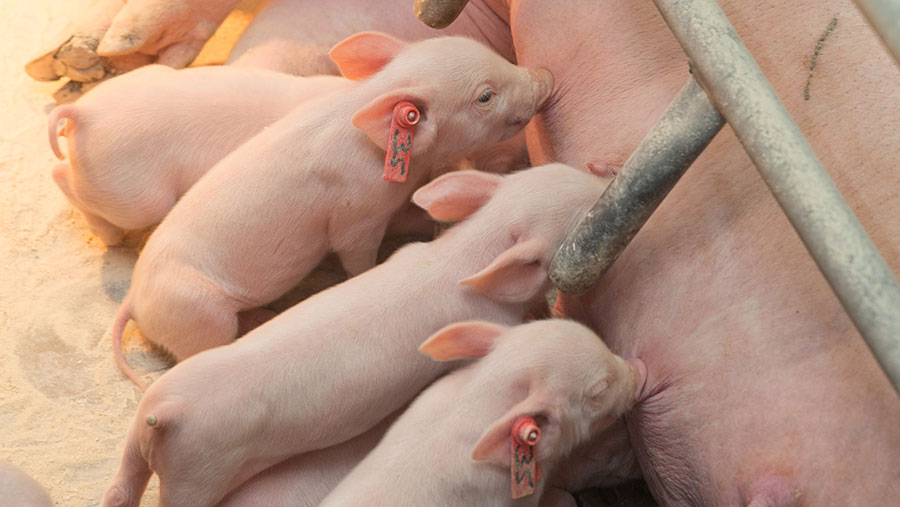How to manage hyper-prolific sows at farrowing
 © Tim Scrivener
© Tim Scrivener Pig farmers need to think of hyper-prolific sows as top athletes and manage them appropriately in order to maximise piglet survival and sow welfare.
Prolific sows experience longer farrowing durations – on average, sows producing 16+ piglets farrow for more than seven-and-a-half hours compared with three to four hours normally.
See also: Farrowing management advice for stockpeople
The effects of longer farrowings include:
- More stillborn piglets.
- Increased variation in litter birthweights.
- Increased number of low-birthweight piglets. For every extra piglet born, there is a decrease in birthweight of 35-43g. The lower the birthweight, the higher the surface area-to-volume ratio. Piglets born weighing less than 1kg are extremely sensitive to cold and can struggle to keep warm.
- Sows are at higher risk of uterine fatigue.
- There are implications for postnatal viability. Piglets may have altered muscle and organ development, brain damage, heart problems and impaired growth, which means they are unable to compete at the udder.
- Large litters can also increase competition at the udder, disrupt milk let-down and reduce colostrum intake. This can affect a piglet’s immunity status and growth potential.
Emma Baxter, a pig behaviour specialist and researcher at SRUC, said: “Farrowing has now become a marathon event for these super-prolific sows. You must treat them like top athletes and optimise their nutrition and water intake, reduce their stress and avoid any drugs.”
Speaking at the Garth Pig Vet Group Conference in York recently, Dr Baxter explained how there was an upward trend for liveborn mortality as a result of larger litters.
Below, she outlines some ways farmers can manage hyper-prolific sows at farrowing.
1. Feed high-fibre diets
Dry sows are often fed a restricted diet with only 50% ad-lib, with further restrictions when they enter the farrowing house.
Research has found that if farrowing starts within three hours of a sow’s last meal, the farrowing duration is constant. However, when farrowing starts eight hours after their last meal, the farrowing duration increases to more than nine hours.
When farrowing lasts more than six hours after the last meal, stillbirth numbers increase.
Dr Baxter said: “If you can feed a high-fibre diet, the energy release is sustained for longer. Ideally, sows should also be fed at least three meals a day in late gestation. It’s important to make sure water intake is good and check flow rates and water quality.”
2. Manage the temperature
Sows are at high risk of heat stress, as lactation is a period of high metabolic load.
The farrowing room should therefore be maintained at 20C. Temperature should then drop to 17C one week after farrowing, with piglets provided with heat mats or lamps.
3. Provide for the sow’s behavioural needs
Sows build nests during lactation. This is associated with the hormones that prepare the sow for farrowing. Nest building increases:
- Sow calmness.
- Lateral lying and udder exposure.
- Oxytocin and prolactin levels.
- Colostrum intake and piglet immunoglobulin levels.
- Sow serum non-esterified fatty acid concentration.
Nest building in indoor systems can be maximised by providing hessian sacks, paper (whole sheets are better than shredded) and straw.
4. Use drugs as a last resort
Giving oxytocin to speed up farrowing should be a last resort, as it increases uterine contractions and compresses the umbilical cord.
This can reduce the foetal heart rate and increase distress, causing piglets to release meconium (their first stool) and aspirate it.
Oxytocin should be used only when necessary. Before using it, consider:
- Doing an internal examination; clear any blocked piglets.
- Using a longer-acting drug, such as reprocine or vetrabutine chlorhydrate.
- Avoid giving oxytocin to gilts.
- Provide pain relief for gilts.

